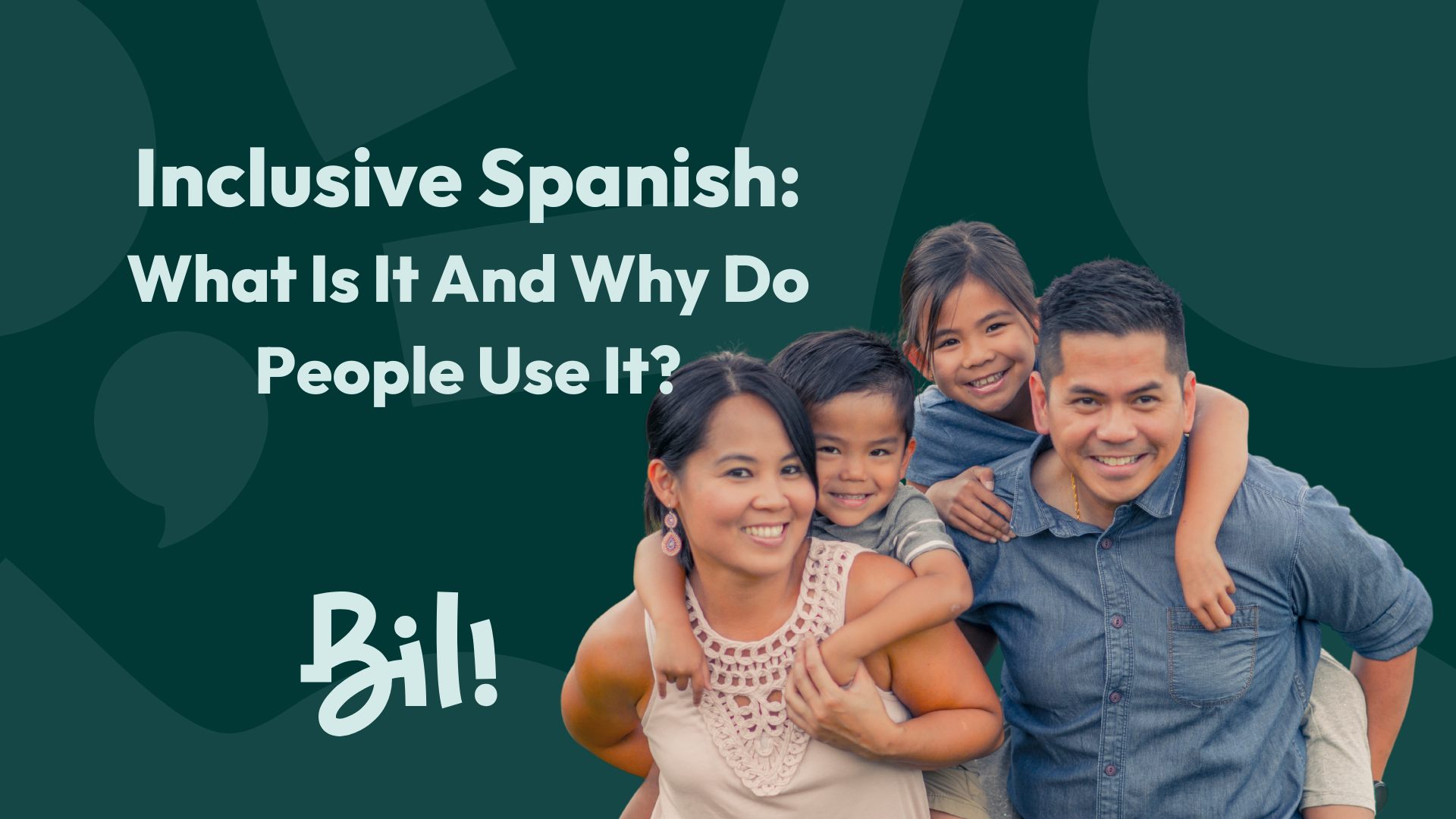What is inclusive Spanish?
Inclusive Spanish, also known as gender-inclusive Spanish, is an evolution of the Spanish language that allows us to communicate in a more accurate, inclusive, and equitable way.
This approach helps us to create a welcoming society for all. When we use inclusive language, we are not assuming the gender or identity of people with our words; we avoid gender stereotypes, sexist biases, and diverse forms of discrimination that advance inequity.
How does it work?
Many people approach inclusive Spanish in different ways. Take the word, “niños,” for example. In traditional Spanish, this could mean a group of boys. It could also mean a group of mixed-gender children. The word is the same, no matter the context.
With inclusive Spanish, a group of mix-gendered children would necessitate a shift in language. Instead of “niños,” some people might say:
- Niños y niñas
- Estudiantes (or some other gender-neutral alternative)
- Niñes
You can also use inclusive Spanish to avoid mis-gendering people who are non-binary, trans, or gender-nonconforming. In English, some people may use “they/them” pronouns as opposed to “he” or “she”. In Spanish, this translates to “elle” instead of “él” or “ella”. In this instance, because the Spanish language has gendered adjectives, you would also modify any adjectives describing the person. For example, “mi amigo es listo” becomes “mi amigue es liste” or “mi amigue es inteligente.” This translates to, “my friend is smart.”
Inclusive Spanish does not change the gender of words that do not refer to groups of people or people who are non-binary, trans, or gender-nonconforming. For example, la mesa (the table), la mano (the hand), and el horno (the oven) all remain unchanged.
Are you allowed to change languages like this?
Yes! Languages evolve all the time to match the needs and context of modern society. It is true that inclusive Spanish is met with resistance by language academies such as the Real Academia Española (RAE). However, numerous universities and institutions now realize its linguistic validity. The embrace of gender-inclusive Spanish by the LGBTQIA+ community and their allies is steadily growing.
When should children learn about inclusive Spanish language?
Children can learn about inclusive Spanish when they start learning Spanish. No matter your child’s age, it is never too early (or too late!) to talk about gender. It is completely developmentally appropriate for children to learn about pronouns and inclusive language from a young age.
Some great resources for supporting these resources include Siendo tú: una primera conversación sobre género (Being You: A First Conversation About Gender). Bilingual Generation’s Bili app provides a fun and engaging language learning experience with the option of enabling inclusive Spanish mode. This way your child can see inclusive language in context, while learning the Spanish language. Adults can always turn this mode on and off in the settings section of the app.
Where can I learn more?
Check out the videos/resources below to learn more about inclusive Spanish language:

